Contact
Camila Primieri Nicolli
Assistant Professor - Extension Plant Pathologist
CES | Entomology & Plant Pathology
Phone: (870) 830-2232
Email: cnicolli@uada.edu
Rice Disease Management
Equip yourself with insights into the symptoms of major rice diseases in Arkansas so you can preserve yield and quality of your crops.
Rice Diseases
Sheath blight, a prevalent disease in rice cultivation across Arkansas, poses a significant threat to crop yield and quality. Characterized by distinct lesions on the sheaths of young rice plants, this disease is caused by the soilborne fungus Rhizoctonia solani. In the warm and humid conditions typical of Arkansas rice-growing regions, Rhizoctonia solani thrives, making sheath blight a perennial concern for farmers.
Initially appearing as small water-soaked lesions, the disease progresses rapidly, causing elongated, brownish lesions on the sheaths. As the lesions expand, they may coalesce, leading to extensive damage and weakening of the affected plants.
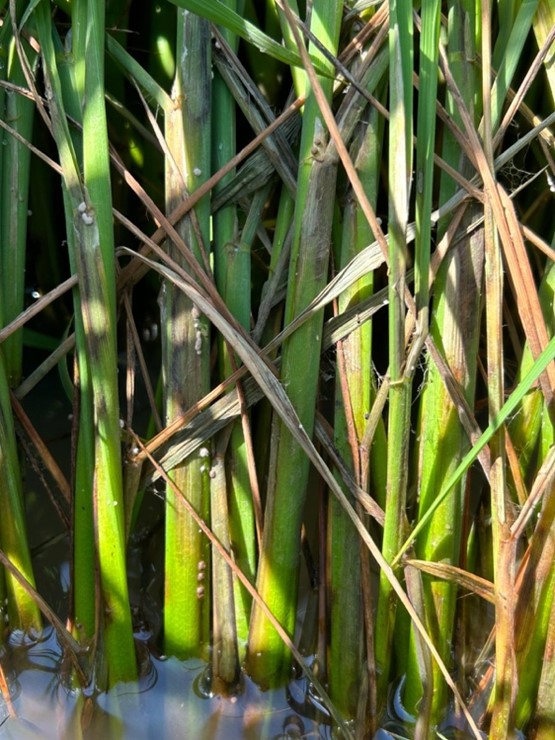
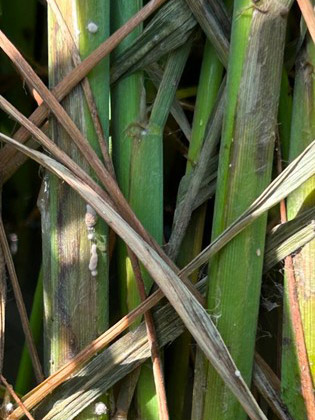
Rice blast is a devastating fungal disease caused by the pathogen Magnaporthe oryzae. It affects rice plants at various growth stages, from seedlings to mature plants, and can cause significant yield losses. The disease manifests as small, diamond-shaped lesions on the leaves, which rapidly expand and turn into larger, irregularly shaped lesions. These lesions can be grayish-white, brown, or even black, depending on the stage of the infection. In severe cases, the lesions can coalesce, leading to extensive damage and even death of the plant. Rice blast can also affect other parts of the plant, including the panicles, causing the development of dark, discolored spots known as neck blast.
Favorable conditions for rice blast include:
- high humidity
- warm temperatures
- dense plant populations
Read more about Blast Rice Diseases on pages 1-2, 6-7.
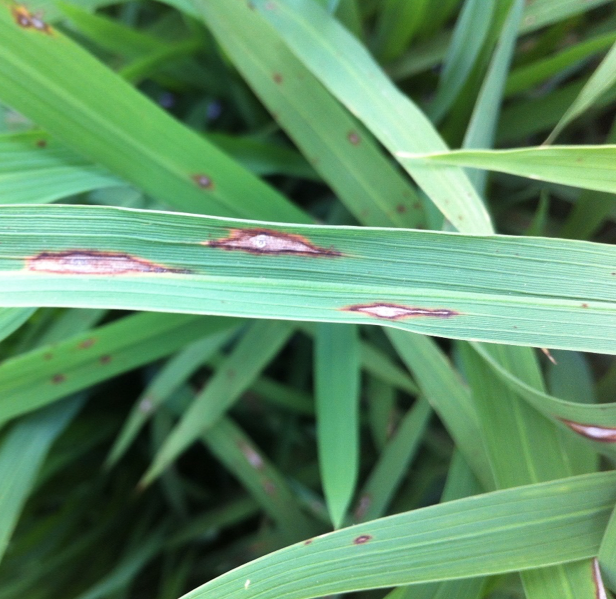
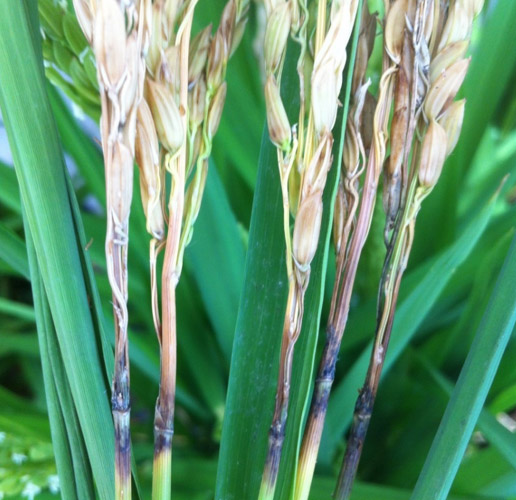
Straighthead is a disorder of unknown cause. Symptoms can be induced with arsenic under artificial conditions.
It is the oldest known rice disease in Arkansas, occurs on certain fields and can cause heavy losses approaching 100% if these fields are not drained and dried at the right timing. Some varieties are more susceptible than others.
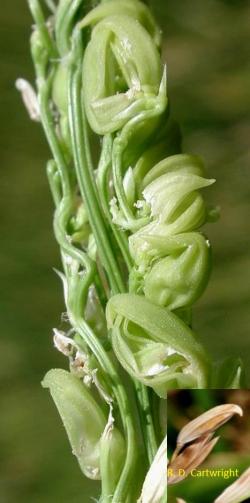
Kernel Smut has been an increasing problem for many years in Arkansas. Infected kernels turn to black powder inside causing quality problem, especially if the rice is used for parboiling.
The disease is suppressed by reducing nitrogen fertilizer and applying fungicides containing propiconazole at the right rate and timing.
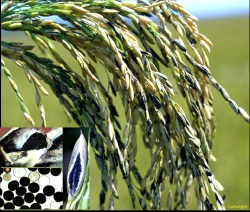
False smut was first reported in Arkansas in 1997 and has been widespread in all rice producing counties. Similar to kernel smut, false smut spores replace the developing rice kernel and greatly affect grain quality. It is more common in fields with high nitrogen rate and on later planted rice.
It is managed using resistant varieties, adequate nitrogen rate and spraying fungicides containing propiconazole. Rate and timing are important.
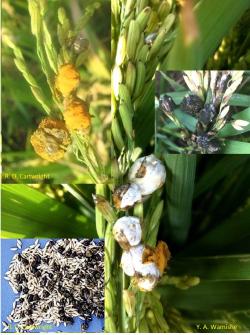
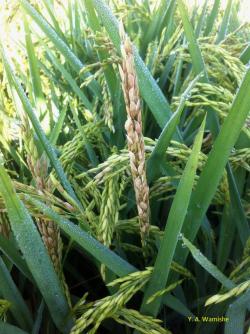 Bacterial panicle blight has been a threatening problem for rice production in recent years in Arkansas. Most
commercial cultivars are susceptible (S) or very susceptible (VS). Jupiter and the
hybrids show moderate resistance level. A yield loss up to 50 percent can be caused
in susceptible varieties that flower in late hot season.
Bacterial panicle blight has been a threatening problem for rice production in recent years in Arkansas. Most
commercial cultivars are susceptible (S) or very susceptible (VS). Jupiter and the
hybrids show moderate resistance level. A yield loss up to 50 percent can be caused
in susceptible varieties that flower in late hot season.
There are no recommended pesticides. Early planting and managing nitrogen fertilizer may reduce disease incidence and severity.
Read more about Bacterial Panicle Blight on page 11, Rice Disease, FSA7580
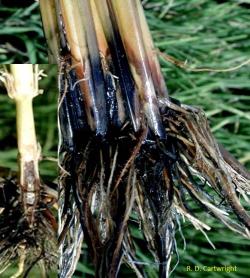 Autumn decline of Hydrogen sulfide toxicity (Akiochi) occurs in roots of rice that are grown on highly anaerobic flooded soils. Rice roots
turn black and eventually die and rot.
Autumn decline of Hydrogen sulfide toxicity (Akiochi) occurs in roots of rice that are grown on highly anaerobic flooded soils. Rice roots
turn black and eventually die and rot.
Some rice fields across the state of Arkansas suffer from this disorder. H2S odor is often noticed in affected fields.
Draining fields at the right time to allow oxygen into soil enhances new root growth.
Read more about Autumn decline or Hydrogen sulfide toxicity on page 13
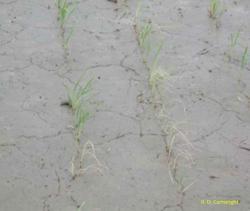 Rice seedling rots and seedling diseases are consistent problems on much of the April planted rice in Arkansas and on certain
minimum tillage fields.
Rice seedling rots and seedling diseases are consistent problems on much of the April planted rice in Arkansas and on certain
minimum tillage fields.
While reducing stand considerably, rice yields may be unaffected by seedling diseases if
the stand is uniform, because modern rice varieties have the ability to tiller to
fill available space and compensate for early stand loss. Read on seed rots and seedling diseases,
Helpful Resources
Arkansas Rice Production Handbook - MP192
Arkansas Plant Disease Control Products Guide – MP154
Need assistance?
Reach out to your county Extension office for help.